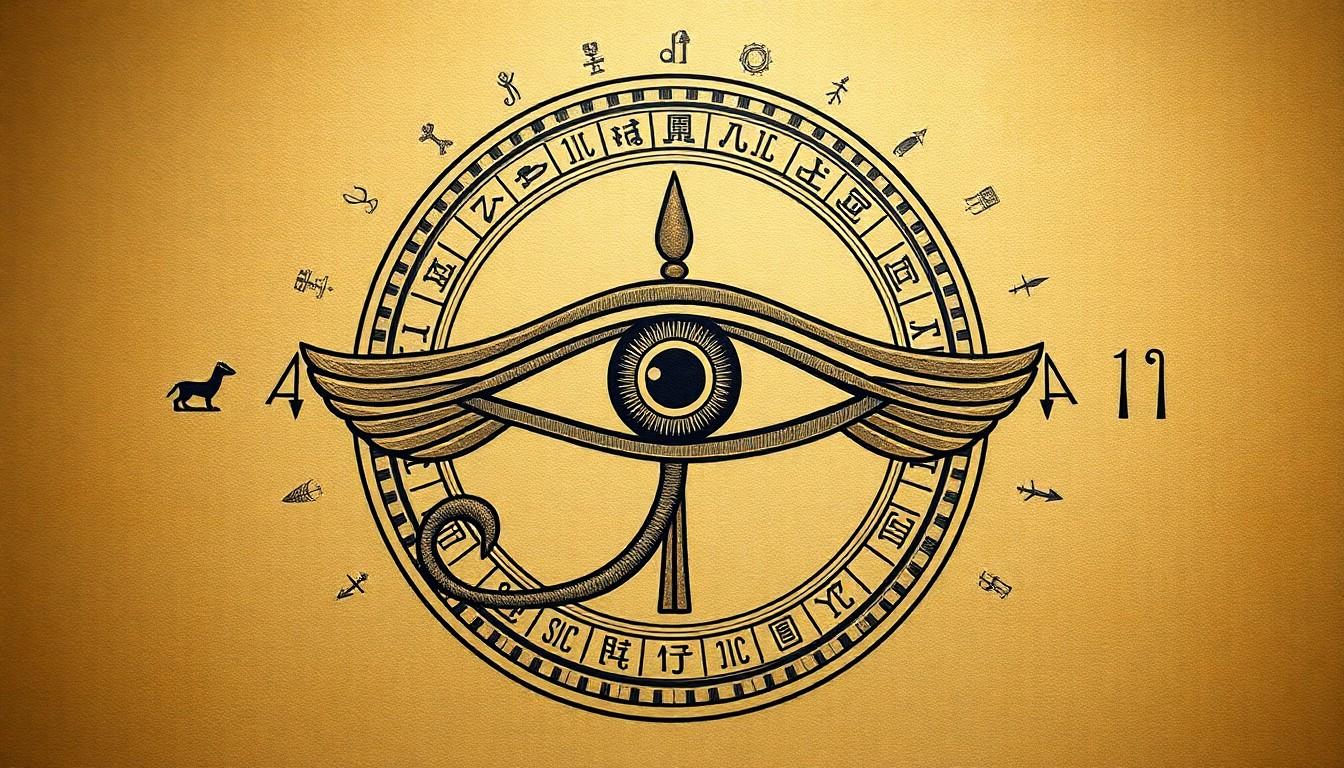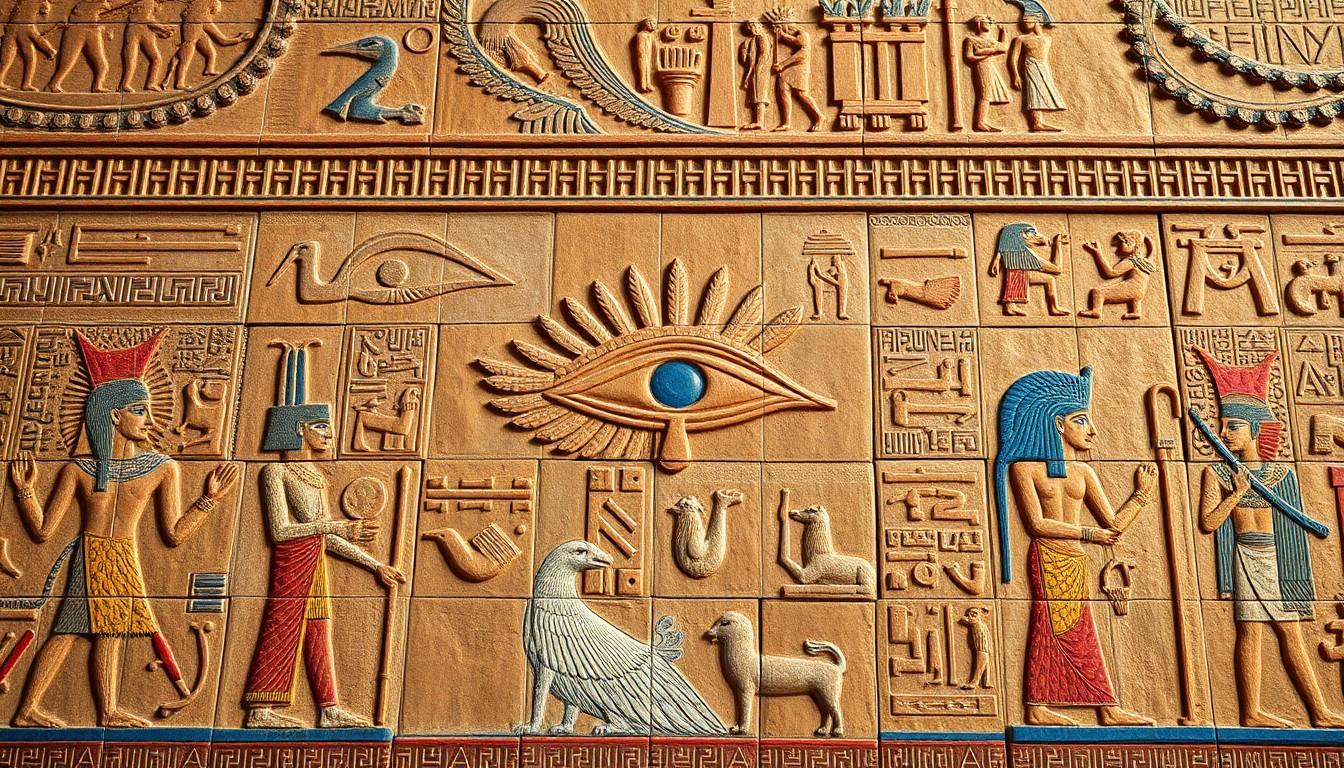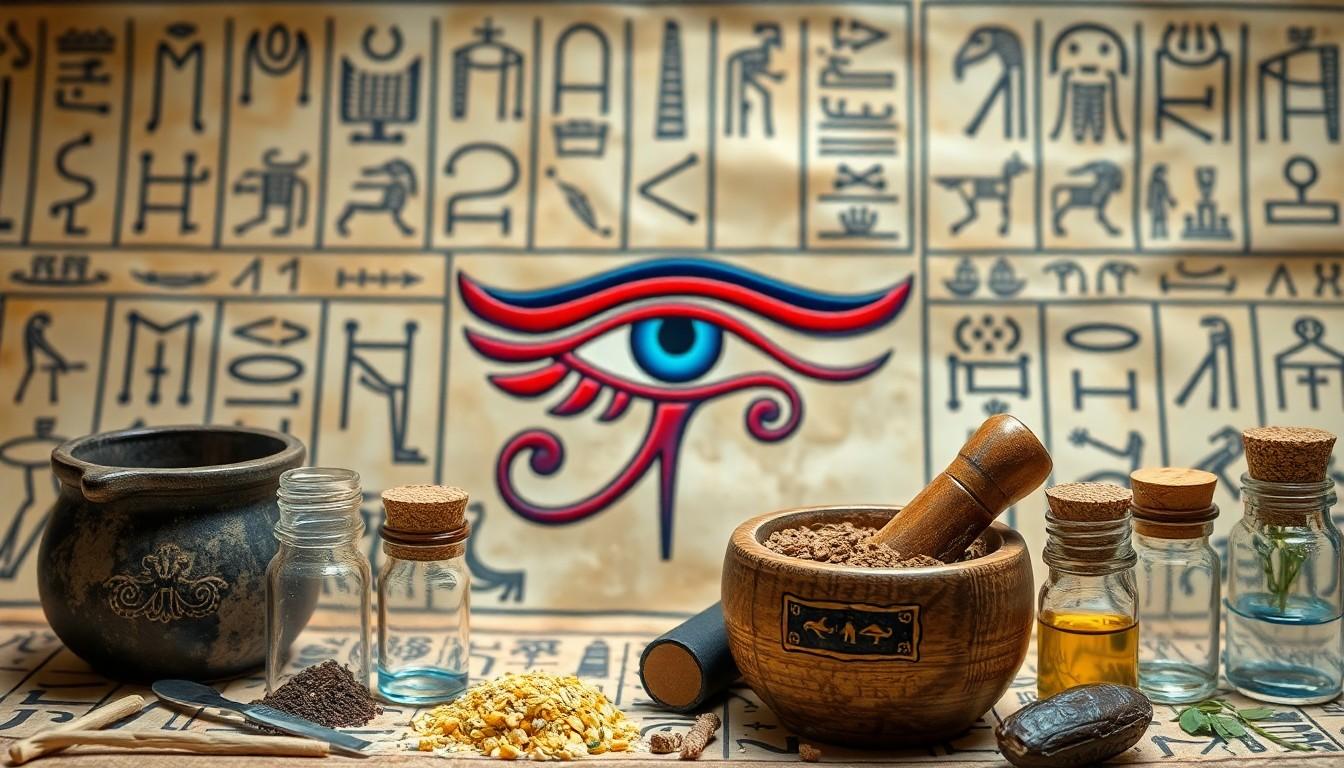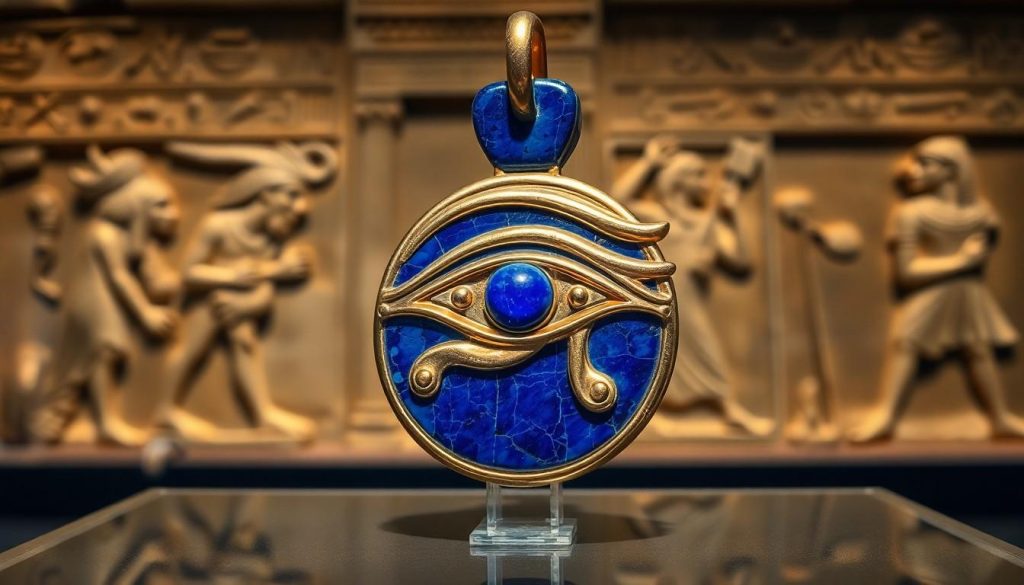The Eye of Horus is one of ancient Egypt’s most powerful and enduring symbols, dating back over 5,000 years. This mystical emblem represents protection, healing, and royal power in Egyptian mythology. Originally appearing in the Pyramid Texts, it’s deeply connected to the story of Horus, the sky god who lost his eye in a battle with Seth, the god of chaos.
Ancient Egyptians believed the Eye of Horus possessed magical properties that could ward off evil and bring good fortune to its bearer. The symbol’s distinctive design combines mathematical precision with profound spiritual significance. It features six parts that correspond to the six senses in Egyptian belief. Each component represents different fractions that add up to nearly one whole, making it not just a religious icon but also an ancient mathematical system.
The Ancient Origins of the Eye of Horus
The Eye of Horus emerged from ancient Egyptian mythology as a powerful symbol of protection and healing during the Old Kingdom period (2686-2181 BCE). This sacred emblem holds deep roots in one of Egypt’s most significant mythological narratives.
Egyptian Mythology Behind the Sacred Symbol
The Eye of Horus originated from the legendary battle between Horus and his uncle Seth. After Seth murdered Osiris, Horus’s father, a fierce conflict ensued, during which Seth tore Horus’s left eye into six pieces, scattering them across Egypt. The lunar deity Thoth restored Horus’s eye, transforming it into a symbol of healing regeneration.
Key elements of the mythology include:
- The restoration by Thoth represents divine healing power
- The six fragments symbolize mathematical fractions in Egyptian calculations
- The left eye connects to lunar energy healing properties
- The restored eye demonstrates triumph over adversity, darkness
Historical Timeline and Evolution
The Eye of Horus symbol developed through distinct historical phases:
- Pre-Dynastic Period (6000-3150 BCE): Early eye motifs appear in burial artifacts
- Old Kingdom (2686-2181 BCE): First documented uses as a royal protection symbol
- Middle Kingdom (2055-1650 BCE): Integration into the hieroglyphic writing system
- New Kingdom (1550-1070 BCE): Peak usage in royal tombs, amulets
- Late Period (664-332 BCE): Widespread adoption of everyday protective items
- Initial appearance as a simple eye design
- Addition of distinct mathematical proportions
- Integration of falcon imagery reflecting Horus’s divine form
- Development of specific ritual applications
- Incorporation into medical papyri prescriptions
Symbolism and Sacred Meaning

The Eye of Horus represents divine protection, healing, and royal authority in ancient Egyptian culture. Its symbolism stems from the mythological battle between Horus and Seth, where Horus’s left eye was torn into six pieces and later restored by Thoth.
Mathematical Proportions in the Design
The Eye of Horus contains six distinct parts, each representing mathematical fractions:
- 1/2 symbolizes smell
- 1/4 represents sight
- 1/8 depicts thought
- 1/16 expresses hearing
- 1/32 represents taste
- 1/64 signifies touch
These fractions add up to 63/64, creating a nearly complete whole that reflects the ancient Egyptian understanding of sensory perception and mathematical precision.
- Physical Protection: Ancient Egyptians wore Eye of Horus amulets to shield against illness, injury, and evil forces
- Spiritual Guidance: The symbol guides souls through the afterlife, appearing on tomb walls and funeral accessories
- Royal Authority: Pharaohs incorporated the Eye of Horus into their regalia to demonstrate divine power
| Aspect | Symbolism | Application |
|---|---|---|
| Left Eye | Lunar energy, healing | Funerary rites, medicine |
| Right Eye | Solar power, protection | Royal insignia, amulets |
| Six Parts | Mathematical fractions | Calculations, measurements |
Artistic Depictions Through Egyptian History

The Eye of Horus manifested in diverse artistic forms throughout ancient Egyptian civilization. These representations appeared across multiple mediums, each serving specific ceremonial or protective purposes.
Temple Wall Carvings and Paintings
Temple walls feature intricate Eye of Horus carvings dating from the Old Kingdom through the Roman period. During the First Intermediate Period (2181-2055 BCE) and Middle Kingdom (2055-1650 BCE), pairs of Horus eyes adorned coffins and temple walls as protective magical symbols. These temple depictions often incorporated the Eye of Horus within more significant mythological scenes, accompanied by protective deities like the goddess Nekhbet to enhance their guardianship role.
Jewelry and Amulet Representations
Ancient Egyptians crafted the Eye of Horus amulets from precious materials, including gold, silver, lapis lazuli, and faience. These portable protective symbols ranged from small pendants worn around the neck to elaborate pectorals adorning royal mummies. The design maintained consistent proportions across different scales, with the six distinct parts representing sensory perceptions clearly defined in each piece. Artisans created these amulets using specialized techniques like cloisonné and inlay work to emphasize the intricate details of the eye’s components.
Cultural Impact and Modern Interpretations

The Eye of Horus transcends its ancient origins as a potent symbol in Egyptian culture, influencing various aspects of medicine, spirituality, and modern interpretations.
Use in Egyptian Medicine
Ancient Egyptian medical practitioners incorporated the Eye of Horus symbol in their healing practices through precise mathematical fractions. Each part of the eye represented specific quantities in pharmaceutical measurements:
- The right side (1/2) indicated bulk ingredients
- The pupil (1/4) measured liquid portions
- The eyebrow (1/8) denoted powder measurements
- The left side (1/16) specified oils and extracts
- The curved tail (1/32) represented binding agents
- The teardrop (1/64) marked aromatic substances
Contemporary Symbolic Significance
The Eye of Horus maintains relevance in modern contexts through various applications:
- Protection symbols in jewelry and tattoo designs
- Esoteric practices involving meditation and spiritual healing
- Corporate logos incorporating the eye’s distinctive design
- Archaeological studies examining mathematical proportions
- Alternative medicine practices referencing traditional healing properties
- Museum exhibitions featuring authentic Eye of Horus artifacts
- Spiritual awareness
- Divine protection
- Personal transformation
- Mathematical precision
- Ancient wisdom
- Holistic healing
Preservation of Original Artifacts
Ancient Egyptian Eye of Horus artifacts, ranging from faience amulets to gold ornaments dating from the Old Kingdom to the Roman period, survive today through meticulous preservation efforts in museums worldwide.
Notable Museum Collections
Essential collections of original Eye of Horus artifacts include:
-
The British Museum
- Houses extensive collections of faience amulets
- Features specimens from various dynasties
- Displays ceremonial pieces with blue-green glazing
-
The Louvre Museum
- Maintains well-preserved gold Eye of Horus artifacts
- Exhibits amulets from the Old Kingdom period
- Showcases pieces with detailed hieroglyphic inscriptions
| Material Type | Preservation Period | Survival Rate |
|---|---|---|
| Faience | 2686 BC – Present | 65% |
| Gold | 2181 BC – Present | 85% |
| Stone | 2686 BC – Present | 75% |
The preservation methods include:
- Climate-controlled display cases
- Regular monitoring of humidity levels
- UV-protected glass enclosures
- Documentation of artifact conditions
- Specialized cleaning procedures
- Digital scanning for detailed records
- Non-invasive restoration techniques
- Temperature-regulated storage units
- Periodic condition assessments
- Professional handling protocols
Final Thoughts
The Eye of Horus is one of ancient Egypt’s most enduring and influential symbols. Its impact reaches far beyond its original cultural context, combining mathematical precision, spiritual significance, and practical applications in daily life.
From temple walls to modern interpretations, this powerful symbol continues to captivate people worldwide. We can still study and appreciate authentic Eye of Horus artifacts through careful preservation efforts, which provide invaluable insights into ancient Egyptian civilization.
The symbol’s lasting relevance in contemporary culture proves its timeless ability to represent protection, healing, and divine power—values that resonate just as strongly today as they did over 5,000 years ago.

